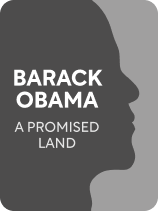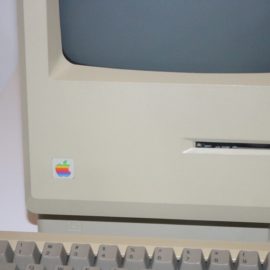

This article is an excerpt from the Shortform book guide to "A Promised Land" by Barack Obama. Shortform has the world's best summaries and analyses of books you should be reading.
Like this article? Sign up for a free trial here .
Where did the Yes We Can slogan come from? Why was it so effective for Barack Obama’s campaign?
The Yes We Can slogan was used all the way back in Obama’s campaign for U.S. Senate. He wanted to inspire people to come together and believe in change.
Read more about the Yes We Can slogan below.
Yes We Can: The Slogan That Inspired
Throughout 2003, Barack traveled Illinois, hearing from voters directly about what most concerned them and what they hoped their representatives in Washington could do to help them.
Everywhere he went, he heard the same universal concerns, shared by voters of every race, color, gender, sexual orientation, and political ideology. They were worried about the cost of medical care, the economic devastation wrought upon small towns by deindustrialization, the difficulty of paying for college tuition for their children.
For the most part, voters weren’t focused on the color of Obama’s skin or his foreign, vaguely Muslim-sounding name. They wanted to build better lives for themselves and their families and wanted Washington to help them fulfill those dreams. Obama saw that his campaign wasn’t about himself or his ambition. It was about this unifying vision of America and the ability of ordinary citizens to come together to make their communities stronger through democracy. As Barack refined and articulated his vision for how Washington should work, this belief in the fundamental unity of Americans would be his guiding principle.
The theme of unity and hope was summed up in the tagline for the campaign’s television advertisements: Yes We Can.
The Yes We Can slogan became a groundbreaking and unifying message.
A Unifying Candidate
With his unifying Yes We Can slogan, key endorsements from the state’s five largest newspapers, and growing stature in the Illinois State Senate, Obama cruised to victory in the U.S. Senate Democratic primary on March 16, 2004. With several other candidates on the primary ballot, he won a staggering 53 percent of the vote—29 percentage points ahead of his closest competitor.
The victory in the primary turned him into a national political figure overnight, with the media and Democratic insiders now recognizing him as a rising star within the party. Of course, this brought a level of media attention on Barack and his family that they had never known before—and never truly be free of again. Reporters all wanted to get to know this young African-American candidate who seemed to represent the future of the Democratic Party.
Barack didn’t just talk about American unity; his very life story vindicated it. After all, he was the son of a Black Kenyan immigrant and white mother from Kansas, raised by his single mom with the support of his white grandparents.
This was the new, diverse America personified in a candidate. And it was a biography and message that was resonating more and more with an electorate sick of the divisive, angry, bitter, partisan politics that defined the Bush years. The Yes We Can slogan was working.
Delivering the Keynote
As the 2004 Democratic National Convention approached, presidential nominee John Kerry’s campaign decided to take Obama’s political brand and message to the next level—they would ask him to deliver the convention’s keynote address.
In an unusual move for a candidate for national office, Obama chose to write the bulk of the speech himself rather than having his team handle it. In his address—his true introduction to a national audience—he articulated his political vision
Obama told the convention crowd that he did not see an America made up of red states and blue states; for him, there were only the United States of America. Being raised in a family that had shown him unconditional love despite its racial barriers was proof that, whatever its shortcomings, the idea of America was fundamentally decent—and that what united Americans was far greater than what divided them.
Looking back, Barack remembers much of his dazzling convention speech as a blur. But he still sees the moment where he connected with the audience, both on the convention floor and the millions watching at home. He knew he had tapped into something profound—a collective yearning for hope that America’s divisions could be healed.

———End of Preview———
Like what you just read? Read the rest of the world's best book summary and analysis of Barack Obama's "A Promised Land" at Shortform .
Here's what you'll find in our full A Promised Land summary :
- How Barack Obama went from relative obscurity to the first Black president
- What principles guided his political leadership style
- Why Obama retained an unshakable faith in the potential and promise of America






